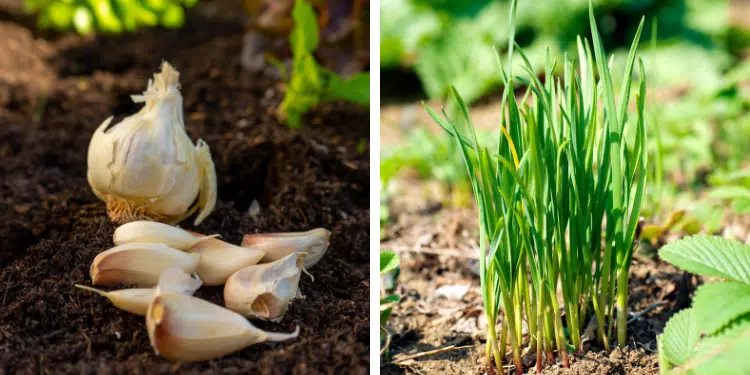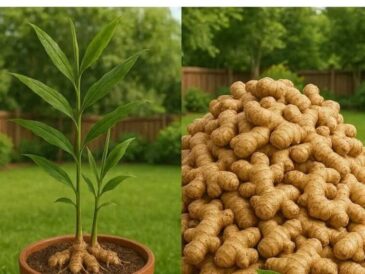Garlic Care Through the Seasons (Month-by-Month Guide)
September – Planting Time
- Prepare soil and plant garlic cloves.
- Water deeply to help establish roots.
- Add mulch for insulation.
October – Root Establishment
- Garlic develops roots under the soil surface.
- Keep mulch in place.
- Water only if the weather is very dry.
November – Winter Prep
- In colder regions, add an extra layer of mulch as temperatures drop.
- Plants may sprout small green shoots, which is normal.
December to February – Dormancy
- Garlic rests beneath the soil while roots continue growing slowly.
- Little care is needed; just ensure mulch remains intact.
March – Spring Growth Begins
- Shoots emerge as temperatures warm.
- Remove some mulch to allow soil to warm.
- Water lightly if the soil is dry.
April – Vigorous Leaf Growth
- Fertilize with a nitrogen-rich source (fish emulsion or compost tea).
- Keep weeds under control.
May – Scape Season (Hardneck Garlic Only)
- Cut scapes when they curl for tender, flavorful cooking.
- Removing scapes encourages bigger bulb growth.
June – Bulb Development
- Water consistently, about 1 inch per week.
- Stop fertilizing to encourage bulb maturation.
July – Harvest Time
- Garlic is ready when the lower 2–3 leaves turn yellow but the upper leaves remain green.
- Gently dig up bulbs with a garden fork.
August – Curing & Storage
- Cure bulbs in a shaded, airy place for 2–3 weeks.
- Trim roots and stalks, then store in a cool, dry spot.
And then, September comes again… and the cycle repeats!
Common Garlic Planting Mistakes to Avoid
- Planting Too Shallow: Leads to weak bulbs and winter damage.
- Using Grocery Store Garlic: Often treated to prevent sprouting and may carry disease. Always use seed garlic.
- Skipping Mulch: Exposes cloves to cold damage and weed competition.
- Overwatering: Garlic hates soggy soil and can rot if overwatered.
- Planting Small Cloves: Yields small bulbs; always select the biggest cloves.
Benefits of Planting Garlic in September
- Bigger Bulbs: Fall-planted garlic consistently outperforms spring garlic.
- Earlier Harvests: Enjoy garlic when others are just starting.
- Self-Sufficiency: Garlic is one of the easiest crops to save and replant year after year.
- Low Maintenance: Once planted, garlic requires minimal care until spring.
- Natural Pest Control: Garlic helps deter pests in companion planting (like aphids and carrot flies).
Garlic as a Companion Plant
Garlic isn’t just useful for cooking – it’s also a natural companion plant that benefits other crops.
- Protects Tomatoes: Repels spider mites and aphids.
- Supports Fruit Trees: Helps deter borers and beetles.
- Helps Roses: Reduces black spot and aphid infestations.
- Boosts Carrots and Beets: Repels carrot flies and leaf miners.
Planting garlic in September means it will be ready to support these crops during the next growing season.
Every September, as the days shorten and the air cools, I head into the garden with my seed garlic.
Planting at this time has never failed me – the bulbs are always bigger, the harvest earlier, and the plants healthier.
Garlic is one of those crops that rewards patience. While it sleeps beneath the soil all winter, it’s preparing for a strong burst of growth in spring.
And when I finally harvest those fat, aromatic bulbs in July, I always remember why I plant in September—and why I’ll never regret it.




